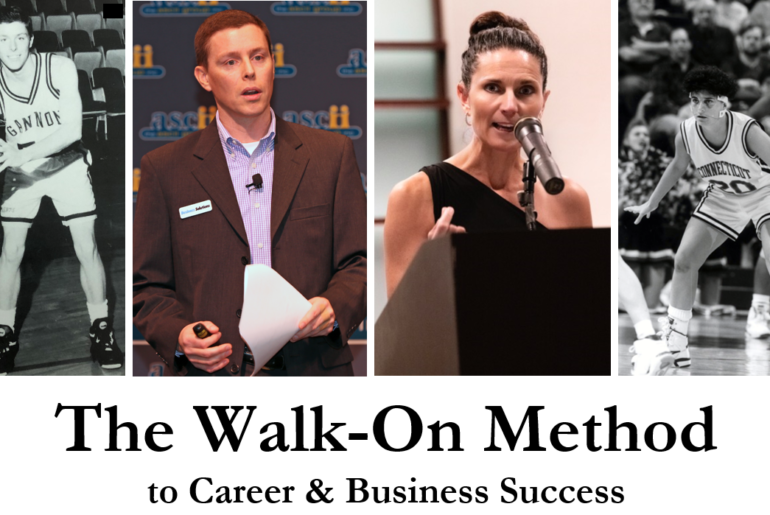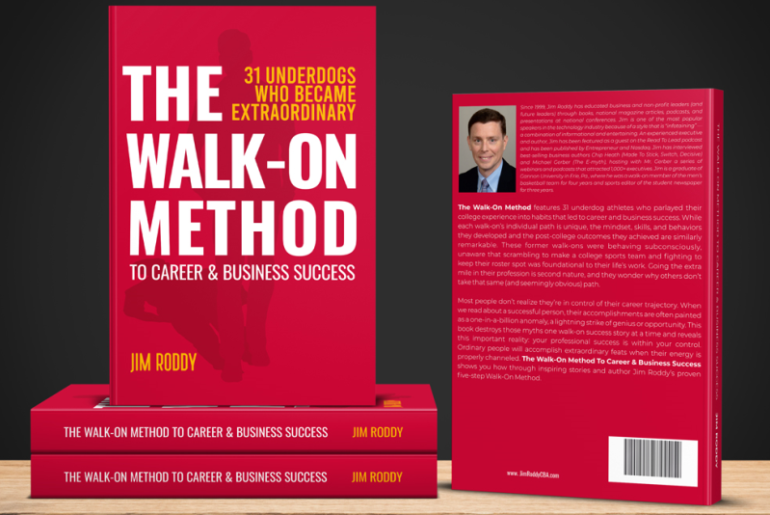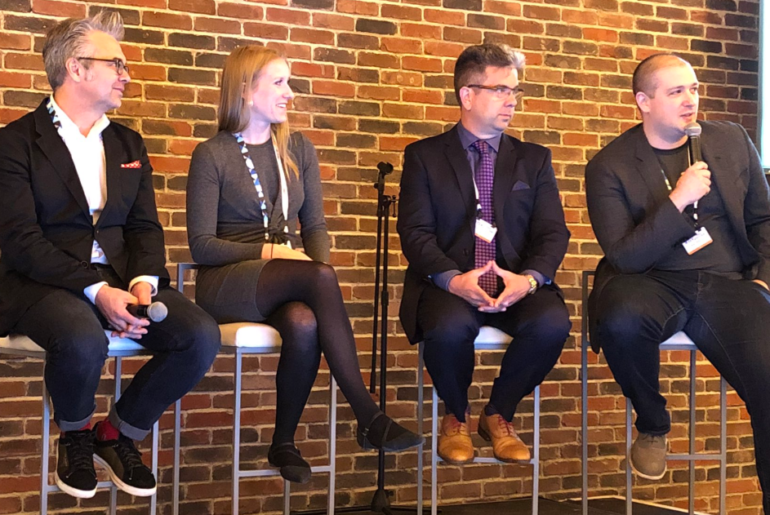4 Crucial Customer Service Communication Skills for Resellers
This is part 6 of our content series “Adapt: Strong Advice for POS Resellers,” powered by Vend
Raise your hand if you want to improve the level of customer service your company provides. Okay, I’m guessing you didn’t actually lift one arm above your shoulders – nobody really does that when they’re reading an article to themselves – but in your mind I bet your hand shot straight up. I say that with confidence because I’ve engaged with leading resellers for 20+ years, and every one of them is constantly striving for improved customer service from their techs, help desk, administrative staff, and salespeople.
Changing the mindset of your team may be the first step to accomplish that goal, but skill building is where the rubber meets the road. I suggest you teach your team these four communication techniques to make progress on your customer service journey.
The 90:10 Ratio
Instruction for customer service communication usually focuses on asking the right questions, but you’re not going to hear any data from the customer unless you zip it occasionally. Follow The 90:10 Ratio. The customer should talk 90% of the time; you should talk about 10% of the time. (In reality, the actual conversation ends up closer to an 80:20 ratio, but you’ll achieve that only if you shoot for 90:10.)
Listen to each answer in full. Do not anticipate what the customer is going to say. When the customer stops talking, give them a verbal cue (such as “mm-hmm” or “yes”) that will suggest they keep talking. When you don’t talk, the customer often will start talking to fill the silence. This helps you gain more information and, when appropriate, can defuse a confrontational situation. Will some of the silence be awkward? Yep. But use it to your advantage. Don’t speak just because the silence becomes uncomfortable for you. Silence – even uncomfortable silence – can be beneficial if you want to:
Encourage the customer to talk more on the subject.
- Encourage the customer to talk more on the subject.
- Take some time to think.
- Take additional notes.
- Maintain emotional control.
- Change the mood of the conversation from casual/fun to serious.
Additionally, silence prevents the customer service rep from leading the customer to an answer. This forces the customer to respond. In other words, wait as long as it takes to get a complete and accurate answer from the customer.
The 30-Second Rule
Lengthy questions or comments can undermine your ability to gain information. The 30-Second Rule is a guideline that you should talk for 30 seconds or less each time you speak. Otherwise, you jeopardize the effectiveness of the discussion. The 30-Second Rule improves communication and understanding between the customer service rep and the customer because it separates individual points, making them easier to digest and understand even in long, in-depth conversations. If you talk longer than 30 seconds at a time, you increase the likelihood that the customer will miss your point. This rule doesn’t always literally mean 30 seconds (put your stopwatch away), but it conveys a clear and memorable communication principle that you need to control your conversation with a customer.
To use the 30-Second Rule effectively, provide small pieces of information on the message you’re trying to convey to the customer. Follow up by asking a question or requesting feedback. Communication improves because you actively engage the customer in the conversation. While more complex topics require more explanation, the information will be more easily understood if you stop and ask for feedback during the explanation. Resist the tendency to keep talking until you exhaust the subject.
QACF – Question, Answer, Comment, Feedback
No, QACF is not the sound a duck makes when it’s trying to quack and eat at the same time. QACF is an acronym that represents the pattern your customer discussions should follow: Question, Answer, Comment, Feedback. You ask a question. The customer answers. You make a related comment, then ask/wait for feedback. This makes the discussion conversational and keeps customers from feeling like they’re being grilled or run through a survey.
More specifically:
Q & A is the process by which you ask a clear, succinct, probing question and the customer answers it. Q doesn’t always have to be a question. It can be a request or statement.
C is when you comment in response to the customer’s answer. The comment validates your understanding of the answer.
F is when the customer provides feedback that typically affirms or disputes that you understood the original answer.
A customer won’t want to interact with a rep whose continuous questioning creates a confrontational relationship. A good strategy to follow in order to learn the truth is to paraphrase the customer’s response to your question. It shows that you are listening. You conversation charted out might look something like QACF, QAQAQAQAQACF, QAQAQACF, etc.
Here are six tips for effective use of QACF:
- Listen to customers’ answers and react naturally to their cues.
- Don’t assume anything.
- Let customers fully answer your questions. Don’t interrupt. Take notes to capture pertinent points that you want to come back to later in the conversation.
- Engage customers. Talk about their experiences, not yours.
- Have a good understanding of your questions. Prepare your questions in advance so you don’t fumble your way through the conversation.
- Listen! Your Q and C should be succinct. The customer’s A and F should be more detailed.
What Could We Be Doing Better For You?
At a recent RSPA (Retail Solutions Providers Association) conference, keynote speaker Dr. Robert Bies of Georgetown University introduced the concept of “constructive impatience” to the reseller executives in attendance. Bies said the overarching mindset is, “We are doing very well, but we can do better.” This attitude will help you focus on continual improvement.
To customers you can ask, “What could we be doing better for you?” Notice how this is different from merely asking, “Is there anything we can do better for you?” which typically elicits a friendly “no” which doesn’t help the customer or the solution provider. Asking “What could we be doing better for you?” steers the customer towards a more open-ended answer – beyond “yes” or “no” – because it implies you have room for improvement.
If the customer responds with something to the effect of, “Nothing I can think of,” gently press them to share possible areas of improvement. Example:
- You: “One more question I’d like to ask. What could we be doing better for you? How could we serve you better?”
- Customer: “Hmmm. Nothing I can think of. You’re really good.”
- You: “I appreciate that – thank you. But we’re always looking to get better or expand what we offer our customers. If you could wave a magic wand, what could we provide you or do better that would help you?”
- Customer: “Okay. If I had a magic wand, what would really help me is …”
Developing these skills in your team will generate more than broader smiles from your customers. Enhanced communication will lead to a clearer exchange (and a greater volume) of data. This will help you align additional valuable products and services that meet each customer’s needs – increasing your sales and improving your bottom line. Raise your hand high if you desire that outcome.
Adapt: Strong Advice for POS Resellers is powered by Vend. Used in over 25,000 stores around the world Vend is the point of sale of choice for inventory-based retailers. Through our reseller program, we partner with ISOs, dealers, agents and merchant level salespeople to help our partners and merchants sell more, save more and make more. Learn more about our program.
Adapt Part 1: 5 Fundamentals of POS Reseller Marketing
Adapt Part 2: Content Marketing Shortcuts for POS Resellers
Adapt Part 3: Your Best Salesperson Isn’t a Salesperson
Adapt Part 4: 5 Tactics to Ensure You Know Your Clients’ Goals
Adapt Part 5: A VAR’s Guide to Obsessing Over Customer Satisfaction
Channel Business Advisor Jim Roddy works with high-initiative, growth-oriented point of sale VARs, ISVs, and MSPs to help them uncover their blind spots with customers, employees, and business best practices. Then he applies his 25+ years of business management experience, executive leadership, and retail IT industry expertise to help them get better. Jim can be reached at jim@JimRoddyCBA.com.










